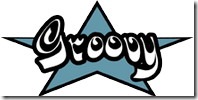Apr 30
This is part 9 in a series of articles on obscure programming languages.
What is Io?
 Io is a small, prototype-based programming language. The ideas in Io were inspired by Smalltalk (all values are objects, all messages are dynamic), Self (prototype-based, eliminating the distinction between instance and class), NewtonScript (differential inheritance), Act1 (actors and futures for concurrency), LISP (code is a runtime inspectable/modifiable tree) and Lua (small, embeddable).
Io is a small, prototype-based programming language. The ideas in Io were inspired by Smalltalk (all values are objects, all messages are dynamic), Self (prototype-based, eliminating the distinction between instance and class), NewtonScript (differential inheritance), Act1 (actors and futures for concurrency), LISP (code is a runtime inspectable/modifiable tree) and Lua (small, embeddable).
Continue reading »
Mar 18
This is part 8 in a series of articles on obscure programming languages.
 What is Haskell?
What is Haskell?
Haskell is an open source, standardized, purely functional programming language with non-strict semantics. With strong support for integration with other languages, built-in concurrency and parallelism, debuggers, profilers, rich libraries and an active community, Haskell enables developers to produce flexible, maintainable, high-quality software.
Continue reading »
Dec 18
This is part 7 in a series of articles on obscure programming languages.
 Groovy is an object-oriented programming and scripting language for the Java Platform. It is a dynamic language that builds upon the strengths of Java but has additional features found in Python, Ruby and Smalltalk.
Groovy is an object-oriented programming and scripting language for the Java Platform. It is a dynamic language that builds upon the strengths of Java but has additional features found in Python, Ruby and Smalltalk.
Continue reading »
Nov 11
This is part 6 in a series of articles on obscure programming languages.
Many .NET fans will recognize F# as anything but obscure. F# (pronounced “F-Sharp”) is a succinct, expressive, efficient, type-inferred, functional and object-oriented programming language for the .NET platform. Although F# is a research language, it can also serve as a quality environment for large-scale symbolic programming commonly used to implement verification, analysis, optimization and transformation applications.
Continue reading »
Oct 03
This is part 5 in a series of articles on obscure programming languages.
Euphoria is a powerful yet simple interpreted programming language. “Euphoria” is an acronym for “End-User Programming with Hierarchical Objects for Robust Interpreted Applications.”
Euphoria was developed to be easier to learn and use than BASIC, but with high-level constructs. Euphoria supports both loose and strict variable typing. Euphoria functions are naturally generic and can operate on any type of data. Euphoria is not object-oriented, yet it achieves many of the benefits of OO languages in a simpler way.
Continue reading »
Aug 19
This is part 4 in a series of articles on obscure programming languages.
Dao is an object-oriented scripting language with dynamically-typed variables. Dao supports complex data structures with built-in types such as complex numbers and multi-dimensional arrays, and includes their corresponding arithmetic operations. Dao also supports multi-threaded programming, concurrent and distributed programming with message passing, regular expressions, and macros that allow new syntax to be defined.
Continue reading »
Jul 09
 This is part 3 in a series of articles on obscure programming languages.
This is part 3 in a series of articles on obscure programming languages.
The Cyclone programming language is a safe dialect of C. Pure Cyclone programs are not vulnerable to a wide class of bugs that plague C programs: buffer overflows, format string attacks, double free bugs, dangling pointer accesses, etc.
Continue reading »
May 24

This is part 2 in a series of articles on obscure programming languages.
Boo is an object-oriented, statically-typed programming language for .NET with a Python-inspired syntax and a focus on language and compiler extensibility. Boo is an open-source language, licensed under an MIT/BSD-style license, meaning that you can view and modify the Boo source code for both personal and commercial use.
Continue reading »
Apr 25
This is the first in what will be a series of articles, each highlighting an obscure programming language.
There are over 2700 languages spoken on Earth. And while there are only about a dozen popular programming languages, there are over 400 known programming languages, many of which you can see in this extensive “Hello World” collection.
Continue reading »
 Io is a small, prototype-based programming language. The ideas in Io were inspired by Smalltalk (all values are objects, all messages are dynamic), Self (prototype-based, eliminating the distinction between instance and class), NewtonScript (differential inheritance), Act1 (actors and futures for concurrency), LISP (code is a runtime inspectable/modifiable tree) and Lua (small, embeddable).
Io is a small, prototype-based programming language. The ideas in Io were inspired by Smalltalk (all values are objects, all messages are dynamic), Self (prototype-based, eliminating the distinction between instance and class), NewtonScript (differential inheritance), Act1 (actors and futures for concurrency), LISP (code is a runtime inspectable/modifiable tree) and Lua (small, embeddable). What is Haskell?
What is Haskell? Groovy is an object-oriented programming and scripting language for the Java Platform. It is a dynamic language that builds upon the strengths of Java but has additional features found in Python, Ruby and Smalltalk.
Groovy is an object-oriented programming and scripting language for the Java Platform. It is a dynamic language that builds upon the strengths of Java but has additional features found in Python, Ruby and Smalltalk. This is part 3 in a
This is part 3 in a 